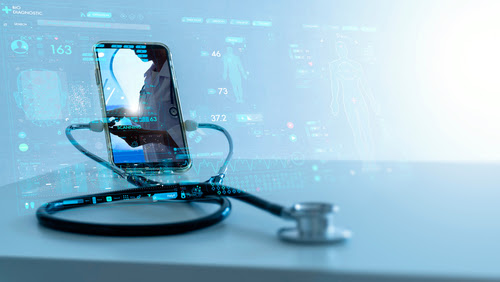
Advocate to pilot AI nursing program with Microsoft

Advocate Health recently announced its participation in a new pilot program with Microsoft intended to use artificial intelligence to aid its nurses.
The North Carolina-based health system, which operates 11 hospitals and 300 care sites across Illinois, said the pilot will help with nursing documentation by capturing spoken observations and incorporating them into flowsheets in the electronic health record.
“Nurses are the lifeblood of the healthcare system, so we’re deeply committed to focusing on how we can make their lives easier,” said Katie Barr, senior vice president and chief nursing informatics officer for Advocate Health. “This is an enormous opportunity to leverage technology to ease the administrative burden of nursing documentation.”
The health system was the first to deploy a similar technology by Microsoft for physicians.
Barr spoke with Health News Illinois about the initiative and its timeline, as well as how it could help the nursing workforce.
Edited excerpts below:
HNI: Why was Advocate chosen for this pilot program?
Barr: We’ve been chosen as one of the handful of organizations across the country to participate in the Microsoft private preview for Project Nursing. What that means is they’re engaging with these early adopters to help make sure that the development of the product is where they need it to be for a general release. Our turn hasn’t come up to actually start the private preview yet, but we have touched bases with them every month. We’re expecting it to kick off just after the first of the year, with the product in nursing hands. We were asked to participate because of our involvement with Microsoft’s physician … product, which is ambient listening for physicians. We were one of the first systems in the country to deploy that, so it was logical that we would also want to be one of the first in the country to deploy the Project Nursing ambient listening product.
HNI: How does this program work?
Barr: It takes casual conversation and listens to it and turns it into discrete documentation. For example, if you are asking a patient about their pain level, and you say, ‘What is your pain level today, one through 10?’ The patient gives you an answer, and then you say, ‘OK, describe it. Is it burning? What are the characteristics? How long have you had it?’ That conversation gets picked up by Project Nursing. It puts it in the appropriate flowsheet rows, so it becomes discrete information.
Now, as it works that way, and a nurse is essentially speaking her care, that might not be something that nurses are comfortable with. For example, if they’re assessing a wound or an IV site, they may not be comfortable saying out loud what the results of that assessment are. That’s something that (we’re going to be working on) with nurses, in how you speak your care in a way that is well understood by the patient and still will result in the right documentation. There are some skills there that probably are used somewhat, but ones that we’re going to have to exercise that muscle a bit.
HNI: What’s the timeline?
Barr: We’re starting with 20 users at a site in our southeast region as our initial pilot. It’s 20 nurses on one unit, so it’s contained. We can get really good feedback from them on the product. And then once we feel like it is ready, we will expand it to about 100 nurses at that same site. We’ll evaluate it again at that point. And then the plan will be to roll it out across the enterprise, so both in the Midwest and the Southeast. Because it’s still a little unknown, we don’t have an exact timeline for that. We also have to make sure that we’ve got all this right. We want to make sure the nurses are prepared for it.
HNI: What issues is this project hoping to address?
Barr: Historically, when a nurse is providing care to a patient, she will provide her care and then go to the computer and document everything that she did. By doing this, the documentation is happening during patient care … We have found that our nurses spend about 150 minutes in their shift doing flowsheet documentation. The goal would be to reduce the amount of time that nurses spend documenting in flowsheets and understand that that time is going to be spent back with the patient and not on the computer.
HNI: What could this mean for patients?
Barr: The benefit to a patient is that their nurse isn’t spending time looking at the computer while she’s in the room. She’s actually providing care and interacting with the patient and their family during that care and is more able to address their concerns and needs without feeling like she has to be distracted by the documentation that she’s doing. Not all patients would appreciate that benefit, but I think many will.









